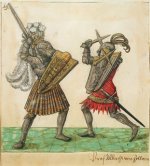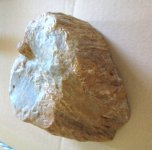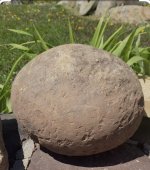Grizz12
Sr. Member
Thank you! Aside from being more stable when seated in the sling pouch, the standard Bi-conical shape of the clay and lead sling projectiles actually does seem to have conferred an aerodynamic advantage. Spheres produce more drag, and in experiments with equal-weight lead sling projectiles the bi-conical football-shaped ones fly further. Anecdotal reports suggest that advanced slingers actually can impart a longitudinal football spiral spin to the lead projectiles, while others suggest that the bullets can "straighten" in flight thus reducing drag. I can't say for certain personally, however the ancient professional warrior slingers were no chumps and possessed a very intimate familiarity with their skill and the different release techniques deployed to achieve different results. I figure that my rare bladed bullets wouldn't have been made if they weren't able to launch them in such a way to ensure the blades were effective. This fella's research thesis on slinging may be interesting to browse through: "Experimentation in Sling Weaponry: Effectiveness of and Archaeological" by Eric T. Skov
And since we're on the subject of sling bullets...
View attachment 1691693
Somewhat recently I obtained an enormous Hellenistic lead sling bullet inscribed with a stylized thunderbolt of Zeus, to "smite" the enemy. When pressed the dealer claimed to have no knowledge of its origins so it may well have come from Turkey (a source for many unprovenanced artifacts nowadays), where the great battle of Ipsus in 301 B.C. was fought between the victorious Seleucids (plus allies) with 400 war elephants and the defeated Antigonids with 75 war elephants. Cursory researching shows that slingers were deployed with great success in antiquity to pelt armored war elephants and their drivers as the slingers could remain well outside the range of the projectiles lobbed by the soldiers riding in the towers, so it makes a nice story to hypothesize that the giant bullet was made specifically for use against elephants. Use against heavy cavalry would make sense as well but isn't quite as interesting.
"Elephant" bullet is 171.25g, or 6.04 ounces. The more typical anti-personnel bullet below is 27.25g, less than 1 ounce. The bronze coins below are from the Seleucid dynasty and depict their prized War Elephants.
View attachment 1691688
View attachment 1691689
View attachment 1691690
It is absolutely enormous for ancient Greek or Roman lead sling bullets so must have been made and used for special targets (like elephants), and is the heaviest decorated sling bullet I've ever seen so naturally is very rare as far as bullets go.
I need to find my sling and go play... I dont know where I'm gonna find oblong rocks but I'll start looking for them



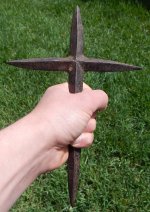
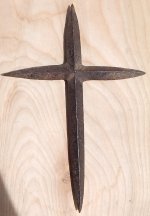
 ).
).